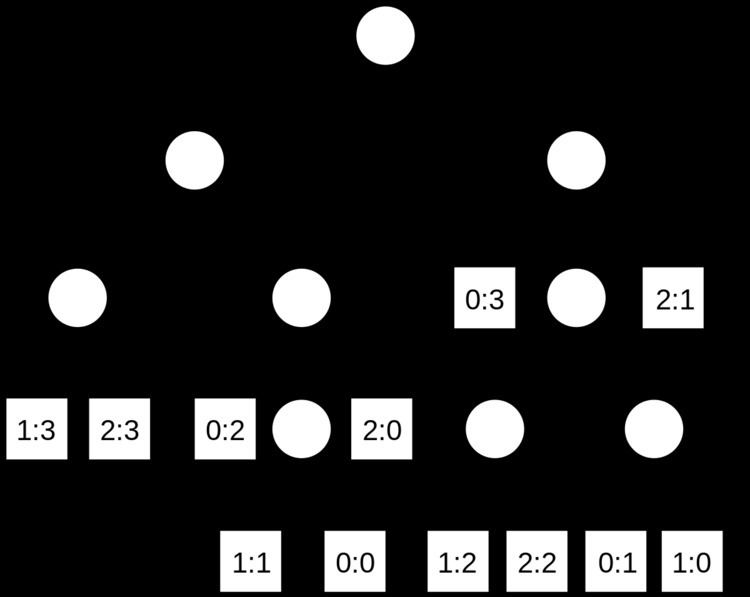 | ||
In computer science, the longest common substring problem is to find the longest string (or strings) that is a substring (or are substrings) of two or more strings.
Contents
Example
The longest common substring of the strings "ABABC", "BABCA" and "ABCBA" is string "ABC" of length 3. Other common substrings are "A", "AB", "B", "BA", "BC" and "C".
ABABC ||| BABCA ||| ABCBAProblem definition
Given two strings,
A generalization is the k-common substring problem. Given the set of strings
Algorithms
One can find the lengths and starting positions of the longest common substrings of
Suffix tree
The longest common substrings of a set of strings can be found by building a generalized suffix tree for the strings, and then finding the deepest internal nodes which have leaf nodes from all the strings in the subtree below it. The figure on the right is the suffix tree for the strings "ABAB", "BABA" and "ABBA", padded with unique string terminators, to become "ABAB$0", "BABA$1" and "ABBA$2". The nodes representing "A", "B", "AB" and "BA" all have descendant leaves from all of the strings, numbered 0, 1 and 2.
Building the suffix tree takes
Dynamic programming
First find the longest common suffix for all pairs of prefixes of the strings. The longest common suffix is
For the example strings "ABAB" and "BABA":
The maximal of these longest common suffixes of possible prefixes must be the longest common substrings of S and T. These are shown on diagonals, in red, in the table. For this example, the longest common substrings are "BAB" and "ABA".
This can be extended to more than two strings by adding more dimensions to the table.
Pseudocode
The following pseudocode finds the set of longest common substrings between two strings with dynamic programming:
function LCSubstr(S[1..m], T[1..n]) L := array(1..m, 1..n) z := 0 ret := {} for i := 1..m for j := 1..n if S[i] == T[j] if i == 1 or j == 1 L[i,j] := 1 else L[i,j] := L[i-1,j-1] + 1 if L[i,j] > z z := L[i,j] ret := {S[i-z+1..i]} else if L[i,j] == z ret := ret ∪ {S[i-z+1..i]} else L[i,j] := 0 return retThis algorithm runs in
z is used to hold the length of the longest common substring found so far. The set ret is used to hold the set of strings which are of length z. The set ret can be saved efficiently by just storing the index i, which is the last character of the longest common substring (of size z) instead of S[i-z+1..i]. Thus all the longest common substrings would be, for each i in ret, S[(ret[i]-z)..(ret[i])].
The following tricks can be used to reduce the memory usage of an implementation:
